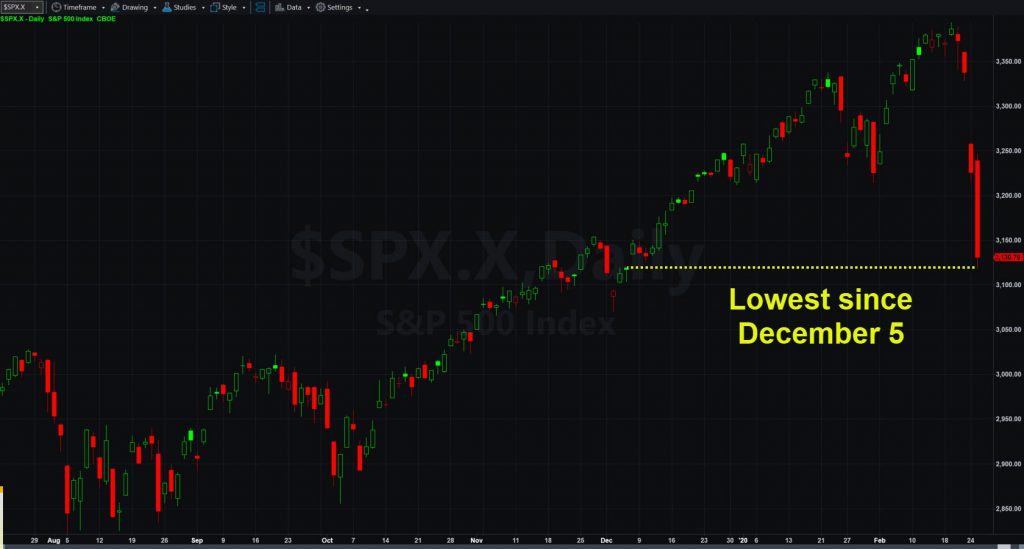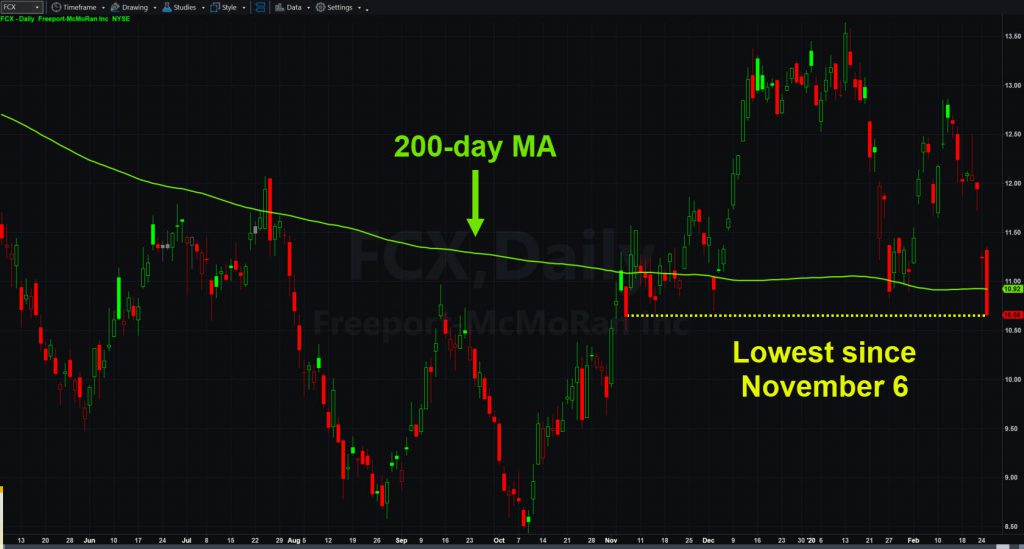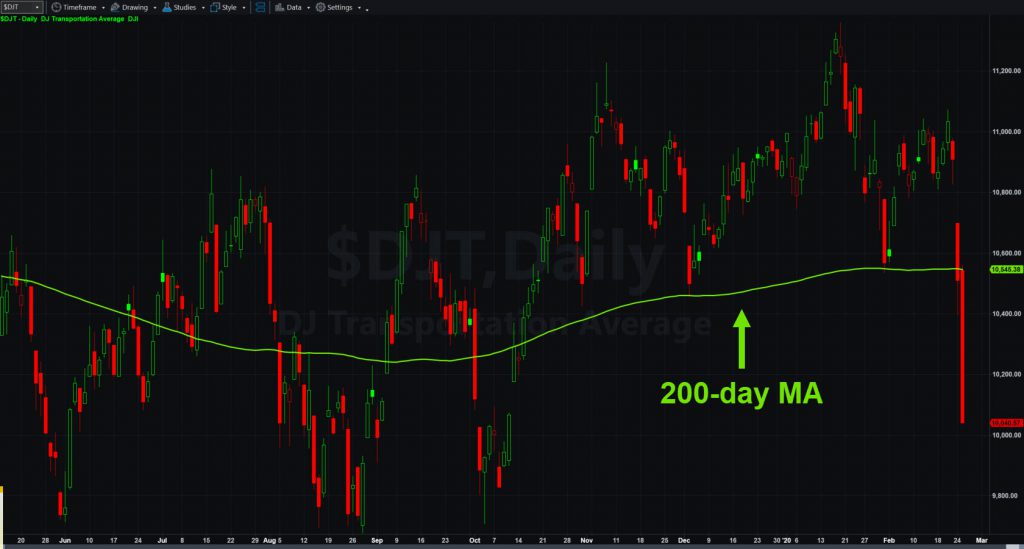Editor’s note: This article was originally published on February 25, 2020.
Stocks continued their selloff on Tuesday as coronavirus spreads around the world. Here are some facts on what it means for your money.
First, this pullback is now a “big one.” The S&P 500 went all of last year without falling 3 percent in a week. Now it’s down almost 6 percent in just two sessions.
Big drops tend to be very broad as investors liquidate stocks without considering their fundamentals. That’s because as money exits large funds, it drags down all the companies in the underlying index.
Investors should remember that times like this don’t favor stock picking. It’s a different kind of market than we’ve seen since late 2018.
This is the time for trading futures and exchange-traded funds (ETF) like the SPDR S&P 500 (SPY) or QQQ Trust (QQQ). If you’re not ready to swim in that fast-moving river, it might be wise to stay out of the water. Remember, it won’t last forever.

Options Activity is Flying
More than 38.5 million calls and puts changed hands as the market crashed on Monday. That was the most since August 8, 2011, according to TradeStation data.
Most of the activity has focused on SPY, QQQ, Apple (AAPL) and Tesla (TSLA).
Volatility is also cranking in a way we haven’t seen in years. While Cboe’s Volatility Index ($VIX.X) might still be under 2018’s highs, it’s up 75 percent this week. That’s the biggest weekly gain since August 2015.
All told the current pullback brought the S&P 500 down as far as 3123 today. That’s 8 percent under last week’s record peak and the lowest level since December 12.
Oil Is Back Below $50
Energy was hurting before coronavirus hit, and it’s only gotten worse since. Crude oil futures (@CL) dropped under $50 in early February before rebounding. Now they’re back below that psychologically important line in the sand.

Fatih Birol, executive director at the International Energy Agency, just said demand for black gold is now growing at the slowest pace in at least a decade. This is obviously a drag on the sector. Did you know that 12 of the 27 energy stocks in the S&P 500 hit new 52-week lows today?
Aside from energy, copper is also used as a barometer of the global economy and Chinese growth. Freeport-McMoRan (FCX) is the most actively traded copper stock. Traders may want to keep an eye on this company after it made a lower high and slides back below its 200-day moving average.

Transportation stocks, especially airlines, are also getting hammered because coronavirus will reduce travel. As a result, the Dow Jones Transportation Average ($DJT) is now down below its 200-day moving average. That’s not true for any other major index, although the Russell 2000 is close.
In conclusion, this week is already one of the most volatile in years. Investors are disregarding strong economic data as early as last week and expecting that coronavirus will drag down business around the world.
Security futures are not suitable for all investors. To obtain a copy of the security futures risk disclosure statement Investment and Trading Disclosures Booklet – Futures.
Exchange Traded Funds (“ETFs”) are subject to management fees and other expenses. Before making investment decisions, investors should carefully read information found in the prospectus or summary prospectus, if available, including investment objectives, risks, charges, and expenses. Click here to find the prospectus.
Options trading is not suitable for all investors. Your TradeStation Securities’ account application to trade options will be considered and approved or disapproved based on all relevant factors, including your trading experience. See Characteristics and Risks of Standardized Options. Visit www.TradeStation.com/Pricing for full details on the costs and fees associated with options.


























